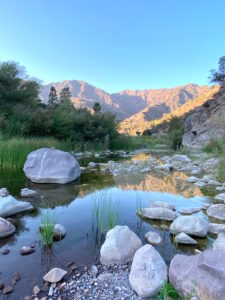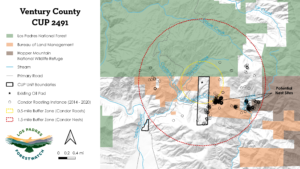Planning commissioners’ landmark decision charts a course for a clean energy future

Ventura, CA — Today, the county’s Planning Commission took a bold step toward drawing down oil development by limiting a request filed by Carbon California to renew an oil and gas permit. The move sets a precedent for future oil development in the county.
The oil company sought permission to continue operation of two existing oil wells and one wastewater injection well and to redrill existing wells in the Sespe Oil Field. The county’s Planning Director approved that permit extension in October, allowing the company to extract oil and dispose of wastewater for another twenty years. That decision was then appealed by local conservation organizations Los Padres ForestWatch, Climate First: Replacing Oil and Gas, and Keep Sespe Wild.
It is the first conditional use permit (CUP) in the Sespe Oil Field to be updated in a quarter century and will lay the groundwork for other CUP extensions expected to be filed in coming years.
In today’s unanimous vote, the commission approved the permit request but restricted its renewal from twenty years to ten, placed a limit on the number of times a well could be redrilled from unlimited to just one, and required full reclamation and restoration of an abandoned oil pads at the site. The restrictions are a step toward alignment with the state’s policy of phasing out oil production and the County’s new guidelines, outlined by its General Plan, which call for a 41% reduction in greenhouse gas emissions by 2030.
“Today’s action signals that the County of Ventura takes seriously its obligation to move a step closer towards a clean energy future,” said ForestWatch executive director Jeff Kuyper. “We’ll continue to do everything we can to ensure that the forest, downstream communities, and our climate are safeguarded from fossil fuel extraction.”

The permit is one of 19 CUPs governing more than 200 oil wells in the Sespe Oil Field. Most of these facilities operated under “antiquated permits” that were approved more than a half-century ago, before the advent of modern environmental laws and with no limit to the number of wells. The Ventura County Board of Supervisors approved a program in 2019 to bring these permits in line with current environmental and public health standards, but that effort was put on hold after the oil industry filed eleven different lawsuits and launched a million-dollar campaign to place the matter on the June 2022 ballot.
“As California moves toward phasing out oil extraction by 2045 and the climate crisis continues to intensify, extraction permit renewals like this require a high level of analysis and consideration,” said CFROG executive director Shannon Simpson. “It’s past time we take these important steps forward to secure a carbon-free energy future for our own health and safety and for the preservation of the natural landscape that delights and sustains us.”
The Sespe Oil Field is just upstream from Fillmore’s only source of water for drinking and irrigation, is home to critical habitat for endangered southern steelhead, and is at the nexus of efforts to reintroduce endangered California condors to the wild. Thousands of visitors pass through the area each year to access trailheads, streams, waterfalls, and campsites in the Sespe Wilderness. The oil lease is adjacent to the Los Padres National Forest and is bisected by Little Sespe Creek, an important tributary to Sespe Creek which itself is a major tributary to the Santa Clara River.
The commission declined to adopt other requests in the appeal, such as addressing ongoing permit compliance issues at the facility and requiring new environmental studies to update the 28-year-old environmental document currently in place which does not account for new information and conditions, cumulative emissions from the Sespe Oil Field, or impacts to climate change, environmental justice, water resources, and wildlife. However, the new permit will be subject to new surety bonding requirements developed by the county if they are instituted within the next 24 months to make sure that the burden of cleanup does not fall to the taxpayers.

Photos: Sespe Oil Field by Bryant Baker and Little Sespe Creek by Sarah Walker







Comments are closed.